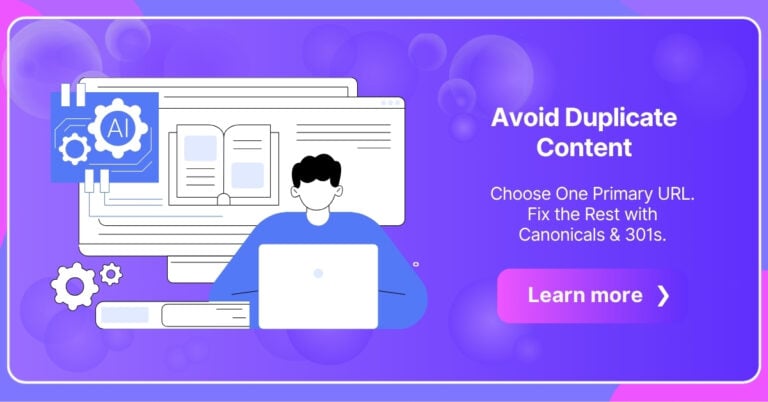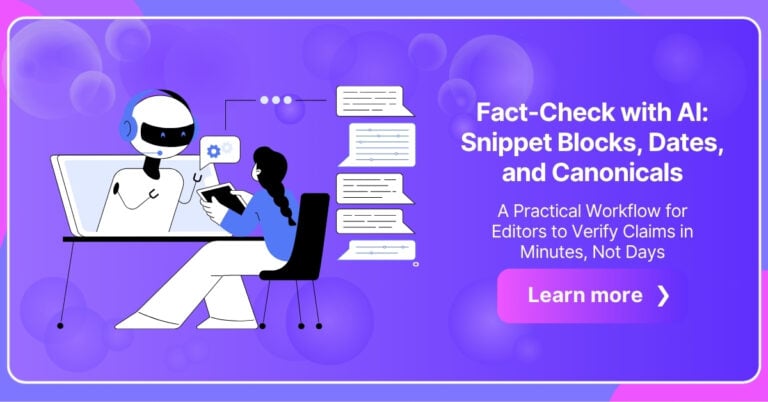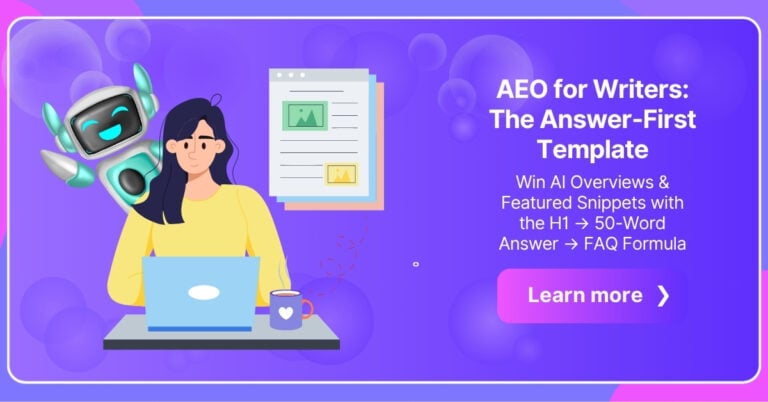Introduction
If your team drowns in Reddit threads, reviews, and long AI research papers—but still ends up with generic drafts—the problem isn’t speed. It’s verification. An AI research assistant built on your sources produces cited briefs and clear outlines you can trust. Start building now with a 7-day free trial — card required; cancel anytime: start your free trial (see pricing).
TL;DR
- Define a clear persona (purpose, audience, tone, formatting, boundaries) so your AI research assistant writes to spec.
- Add structured sources (site/sitemap, files, drives) and keep one canonical page per topic.
- Turn on citations and set Generate responses from: Your Content for verified content.
- Run a 10-step workflow: research scan → UGC clustering → opposing views → brief → outline → quotes → fact-check → stats refresh → entities → draft.
- Use semantic search and RAG so findings map to the best evidence, not just keywords.
- Ship a cited outline in minutes; scale to briefs and articles across your topics.
- Begin now: start your free trial • pricing.
What Is an AI Research Assistant (and Why It Beats Generic Tools)
An AI research assistant automates core research tasks—finding questions people ask, summarizing AI research papers, clustering user pain points, and drafting literature-style briefs—while linking every claim to your sources. Unlike generic AI research tools or an untuned AI content writer, it’s aligned to your audience, your corpus, and your style. Use it for topic discovery, synthesis AI research, competitive notes, and a question-led outline that’s ready for writers and stakeholders.
Set Up in Minutes (Persona → Sources → Citations)
Persona (Set Once, Refine as You Go)
- Purpose: “Research assistant for content/PMM. Answer only from indexed sources; always show citations; if unknown, say so.”
- Audience: roles (PMM, analyst), expertise, region.
- Voice/Tone: clear, precise, friendly; Grade-8.
- Formatting: Hook → TL;DR → question-led H2s; bullets over walls of text; max length rules; include dates on stats.
- Boundaries: no legal/medical advice; no off-corpus guesses; PII guidelines.
- Out-of-scope reply: exact sentence to use when data is missing.
- Few-shot examples: 2–3 short Q→A samples in your voice.
Sources
- Create the agent from a website/sitemap or upload docs/drives. Prefer HTML/Markdown with clean H1/H2s.
- Keep one canonical page per topic (avoid duplicates).
- If you handle visuals, add transcripts or enable image understanding for charts/screenshots.
Citations & Source Policy
- Show citations (inline or expandable).
- Generate responses from: Your Content (most controlled).
- Use Your Content + LLM only when you deliberately want wider coverage (keep guardrails on).
Do the Work: A Repeatable Research Workflow
- Research scan: 10 most-asked questions about your topic with 1–2 links each.
- UGC clustering: group pain points from forums/reviews into themes with short quotes and links.
- Opposing views: list 3–5 caveats and one-line mitigations, each cited.
- Brief: one page—audience, angle, must-cite sources, success metric, disallowed claims.
- Outline: question-led H2/H3s with mapped citations.
- Quote capture: five verbatim quotes (<25 words) with dates and links.
- Fact-check pass: claim-by-claim table with citations; flag “Not Found” items.
- Stats refresh: only recent, dated stats or say none (track the latest AI research and development).
- Entities & versions: products, models, orgs with one citation each.
- Draft: a 500–700 word section with numbered citations and a “Gaps to fill” list.
Quality & Verification (Brand-Safe Outputs)
- Citations required on claims, stats, and definitions.
- Prefer the latest sources and version numbers; date any stat.
- When uncertainty exists, state it briefly and request the missing source.
- Avoid unverifiable statements; keep tone evidence-first.
Under the Hood: RAG & Semantic Search
Your assistant uses retrieval-augmented generation with semantic search (vector embeddings) to surface the most relevant passages, then can rerank (e.g., BM25 + reranker) for precision. That’s why it finds the right paragraph in an AI research paper (even if keywords differ) and produces outlines that stay on topic instead of generic. This approach scales from a single AI research tool to a full corpus of AI research papers and competitive pages.
Examples: From UGC and Papers to Cited Outputs
- From UGC to outline: gather 5–8 themes from real posts; attach 1–2 quotes and links per theme; convert themes into question-led H2s; map each H2 to sources.
- From papers to brief: scan recent AI research papers; extract dated stats and definitions; build a brief that highlights gaps and links to the top passages your writers should cite. Consider a sidebar like “The 10 most important AI research papers of all time” if it exists in your corpus.
- Video analysis option: if you’ve ingested transcripts, treat it as a free AI research tool to analyze videos within your own content library, then cite exact timestamps.
How Your CustomGPT.ai Bot Works (RAG API Clarity)
- Business-grade, privacy-first: responses stay confined to your indexed knowledge; no competitor leakage; encryption in transit/at rest.
- No hallucinations by design: strict grounding + citations—answers come from your sources or the bot says “I don’t know.”
- Multi-source data integration: ingest websites, sitemaps, documents, PDFs, audio/video transcripts, and more (real-time/recurring indexing).
- Programmatic control (RAG API + SDK): optionally use the API/Python SDK to create bots, upload files/sitemaps, and integrate into apps and workflows.
- Workflow integrations: connect via REST or automation tools (e.g., webhooks) to Slack/Messenger/WhatsApp and internal systems.
- Included in paid plans: enterprise-ready features without rebuilding infra (vectors, embeddings, parsing, semantic search, persona, governance).
- Fast TCO win: skip building/hosting/relevancy tuning/ML-ops—focus on outcomes.
Persona Checklist
- Purpose: write only from my indexed sources; always show citations; state uncertainty when needed.
- Audience: [roles/region]; Grade-8.
- Voice/Tone: clear, precise, friendly; evidence-first.
- Formatting: Hook → TL;DR → Q-led H2s; bullets; max length; dates on stats.
- Boundaries: no opinions without sources; no legal/medical advice; PII safe.
- Out-of-scope reply: short, exact sentence.
- Few-shots: 3 samples in our brand voice.
Final Thoughts
An AI research assistant transforms noisy UGC and dense literature into credible, cited outputs—briefs, outlines, and sections your team can ship with confidence. Set the persona, ingest your best sources, enable citations, and run the 10-step workflow to see value in under an hour. When you’re ready, get your first cited brief.
-
Where do I configure persona and citations?
In Settings: Persona controls voice/format/boundaries; Citations lets you show links inline or as expandable notes.
-
How do I add content (site, files, drives)?
Create the agent from your website or sitemap, upload files, or connect drives. Prefer HTML/Markdown and keep one canonical URL per topic
-
Can I force answers only from my content?
Yes. Set “Generate responses from: Your Content.” That keeps outputs aligned to your corpus.
-
Can this replace my AI content writer or AI blog generator?
For research-heavy work, yes. It turns UGC and documents into a cited brief and outline—faster and with proof.





